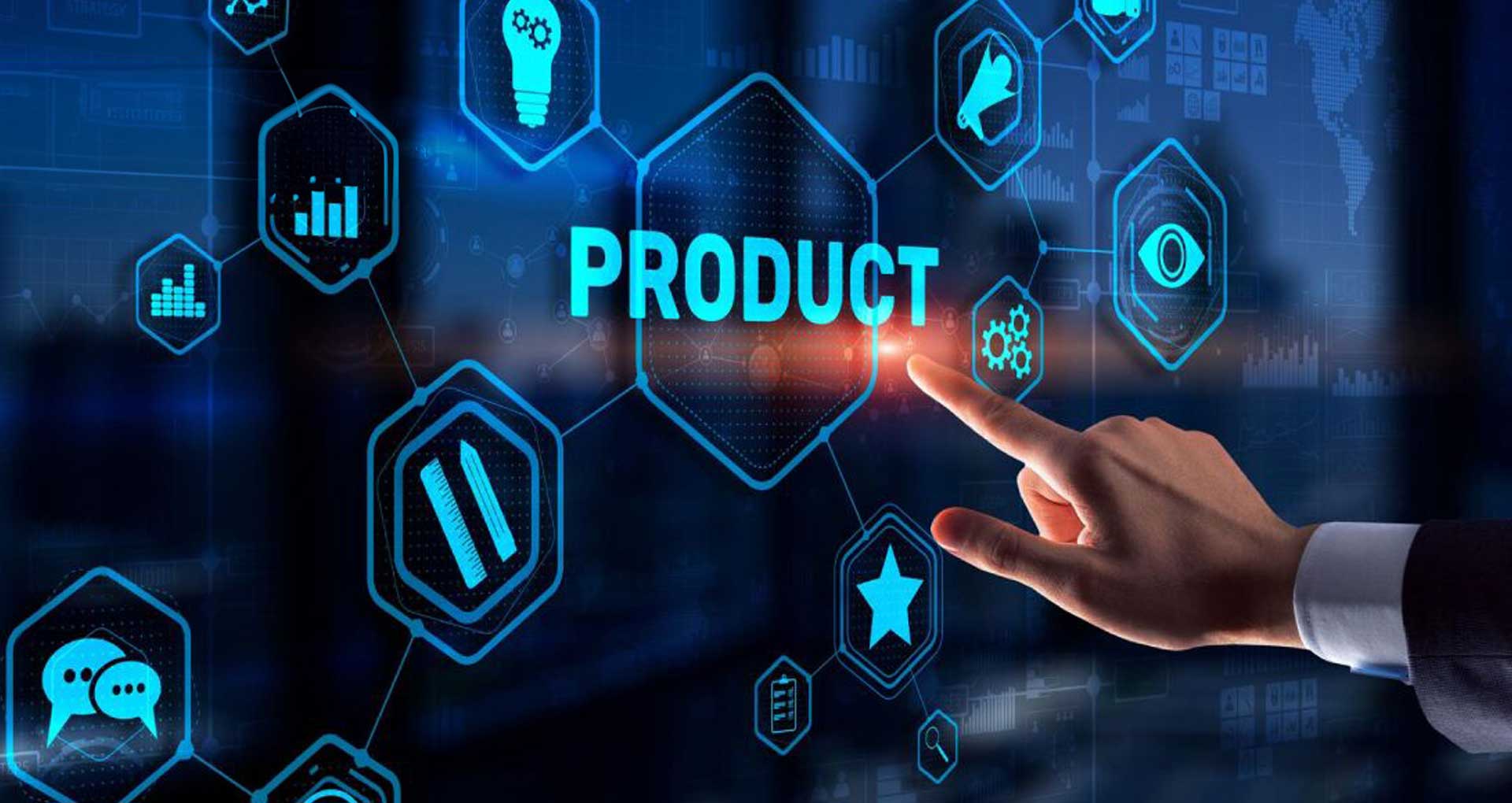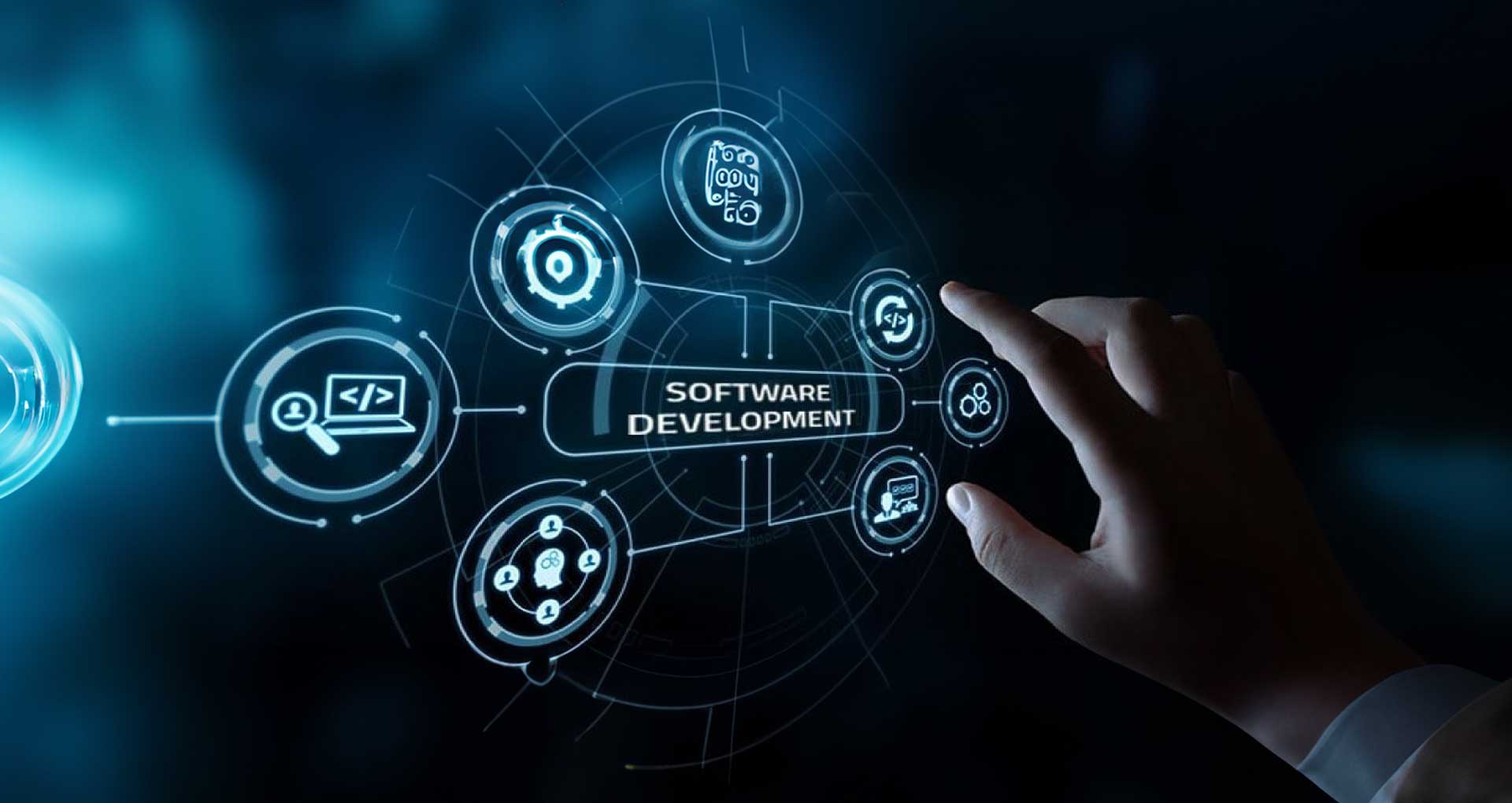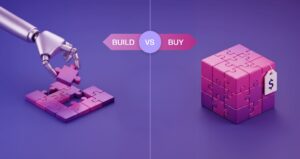Do you know about Quibi’s $2 billion epic fail – a valuable lesson in product discovery? It is the story of a product that crashed and burned in less than a year without a trace. Quibi, a video streaming service, wanted to make short videos that you could watch in 10 minutes or less. But Quibi did not do their homework. Launched in April 2020 with high hopes, it quickly faded by December of the same year.
It’s not that they didn’t try their hardest or lacked the necessary tools. The problem was that they skipped the legwork of testing their business idea and ensuring that people actually wanted what they offered.
The result? In a world where there are already big players in the game of streaming services, Quibi just couldn’t keep up or hold onto its customers.
How can you avoid this fate for your product?
So, software product discovery is the sure-shot way to go. Product discovery, when done right, can help you create products that solve real problems for real people. Read on to understand why is product discovery important, key steps in the software product discovery process, best practices, business benefits, and more!
What is Product Discovery and Why is it Important?
A product discovery describes the iterative process of reducing uncertainty around a problem or idea to make sure that the right product gets built for the right audience. It helps product teams refine their ideas by deeply understanding real user problems and then iterating on the best ways to solve them.
It complements and precedes the steps of product delivery and requires the team to invest more time in researching and validating ideas upfront before sending them to delivery.
The product discovery process plays a decisive role in developing successful products with the perfect features and covers the following steps:
- Building the product discovery team: Assemble the right team, including product analysts, product managers, UX designers, developers, data scientists, and testers.
- Conducting user research: Define your target audience, identify common needs and pain points from different input channels, analyze the market, and crowdsource different perspectives.
- Prioritize opportunities: Rank the identified opportunities based on their customer and business value.
- Carry out product ideation: Generate potential solutions for the identified problems.
- Validate product/feature ideas: Before proceeding with development, validate ideas using techniques like fake door testing.
- Develop prototypes and test them: Continuously iterate and test until a fully functional minimum viable product (MVP) is ready.
Navigating product decisions always involves uncertainties. We prioritize product discovery to mitigate risks associated with our digital product development choices. At Rishabh Software, we strongly advocate this approach because it helps to improve your product consistently and incrementally.
Benefits of Software Product Discovery Process
The software product discovery process helps validate product ideas before investing in development, which helps product teams build better products faster. Let’s have a look at key benefits:
- Product teams truly understand their customers’ needs, moving beyond “nice-to-have” features to creating products that solve genuine problems.
- It adds value to the team, the company (by preventing resource waste on wrong ideas), and customers (by delivering vital solutions).
- It helps validate the team’s solution concepts and ensure that every innovative solution precisely meets user expectations and unserved needs.
- It mitigates pre-, during, and post-development risks.
- In a dynamic digital world, where any product idea may falter, it is important to diligently seek proof of its value to your target audience before implementation.
When is a Product Discovery Process Needed?
A product discovery process is required when you face uncertainty regarding what, for whom, and why you’re building. Assumptions can be risky, potentially wasting time, effort, and resources. You should consider having a product discovery plan in place in the following scenarios:
- New Business Opportunities: Expanding your business into different markets requires researching the target audience, competitors, product scope, and opportunity size.
- New Product Development: Before developing a new product, you need to identify the customer segment, their needs, and preferences.
- Upgrading Products: When adding a feature, analyze its impact on user problems and the overall product experience.
- Acquisitions or Mergers: After mergers, you need to consolidate systems and tools by discovering mutual problems and practical solutions.
In the product discovery phase, teams uncover user problems and test potential solutions. This phase may lead to a decision not to proceed if there’s no user need.
Working through product discovery is by no means easy. Team has to overcome a lot of uncertainty while staying on top of all the pieces of evidence they collect along the way. So, how can you bring structure to this chaos? Let’s explore how you can bring structure and clarity into your product discovery process.
The Structure of the Product Discovery Process
Product discovery has a simple structure: Start with an outcome, discover opportunities, and discover solutions.
Good product discovery involves two key activities:
- Customer interviews to find opportunities
- Assumption testing to discover solutions
When interviewing customers, the goal is to uncover their needs, pain points, and desires within specific stories. The opportunity space is always evolving, so continuous interviews are essential.
For discovering solutions, rapid assumption tests help understand which solutions have promise. These tests cover desirability, viability, feasibility, usability, and ethics. Story mapping and various testing methods further help collect the necessary data to evaluate different solutions.
In essence, product discovery process is about finding opportunities and validating solutions while adapting to evolving conditions.
Software Product Discovery Process at Rishabh Software
Our process includes the identification of end-user needs and pain points, the blueprint of potential solutions, the verification of assumptions, and the assessment of outcomes. This software product discovery phase rolls over several product discovery steps:
Step 1. Identifying the Core Issue
In the initial phase, our primary focus is on identifying the end-user’s pain points or opportunities that need addressing. Key considerations involve defining the target market and understanding their objectives and motivations.
- Kick-off Session: This activity aims to eliminate uncertainties before commencing the product discovery process. The engaged team collaborates with clients to understand their requirements and suggests actionable steps to align with their objectives.
- Establishing Communication: The establishment of effective communication with project stakeholders helps us avoid delays and misunderstandings. Roles and responsibilities are identified, a communication tool is implemented, and team members are guided on its use.
- Prioritizing Workflows: Our specialists configure a task management tool to keep you on top of all processes and to facilitate task delegation and document flow organization.
- Business Modeling: After resolving all your queries and concerns, we establish a scope of tasks and begin the business modeling process. During this stage, stakeholders are identified, and a lean canvas is created, summarizing key business details like goals, issues, solutions, metrics, and other relevant information.
Step 2. In-Depth Exploration
This stage follows the identification of problems and involves thorough research to collect and analyze data. We take the time to understand user behavioral patterns, analyze competitors, and understand the target market.
- Market Research: Extensive data collection, target audience segmentation, and research.
- Competitor Analysis: In-depth examination of the market and competitors, accompanied by detailed reports. Competitors, both direct and indirect, are defined, and a functional decomposition of competitors is conducted.
- User Research: Assessment of product metrics, interviews, focus group sessions, and analysis of potential customer behavior to grasp their needs.
- Target Market Research: We next leverage collected data to analyze the target audience and create an ideal customer profile (ICP) and buyer personas.
The existing lean canvas is revised to accommodate newly acquired data that includes market and competitor analysis report, functional competitors report, target audience analysis report & buyer persona documentation.
Step 3. Ideation
During this stage, we gather feedback and ideas from you, formulate a product vision statement, and finalize a feature breakdown list. Our emphasis is on prioritizing high-impact features for a successful Minimum Viable Product (MVP).
- Meetings: These discussions involve business analysts and the product owner and focus on business cases, accepted solutions, and idea gathering to ensure clarity before initiating the solution elicitation process.
- Product Vision Definition: Documenting the envisioned path for further product development and gaining approval from the product owner.
- Consideration of User Roles: Building a matrix of user roles to tailor solutions to customer needs.
- Feature Set Creation: After comprehending the needs and challenges of potential customers, the core features that will attract customers are defined, including the listing and approval of all ideas before further work commences.
Step 4. Building the Roadmap
The fourth and final stage involves providing estimates for successful product development, shaping the roadmap, and defining optimal solutions to tackle end-user pain points and problems. The result is a roadmap for a ready-to-launch product with well-defined features.
- Feature Breakdown List: Finalizing the feature breakdown list by conducting high-level meetings with functional office leads.
- Team Formation: Defining roles, responsibilities, and time allocation for project specialists, including deadlines.
- MVP Scope: Analyzing feature importance concerning product value to construct an MVP that caters to most client needs. This minimizes risks and ensures cost-efficient spending. In cases where an MVP isn’t necessary, suitable SaaS services are identified.
- Schedule Baseline: Creating a detailed schedule that outlines all stages of product development.
- Technology Stack Definition: Advising clients on the best technology stack based on extensive experience.
- Hosting Proposal: Assisting clients in selecting an optimal hosting solution to make their product live online, balancing computing power and cost.
- Proposal Presentation: Crafting a comprehensive presentation and sharing it with the client or product owner.
This structured sequence of activities contributes to the overall progression of product development – from defining problems to generating solutions and eventually creating a roadmap for successful implementation.
Team Roles Involved in Software Product Discovery at Rishabh Software
At Rishabh Software, the product discovery process is driven by the collaborative effort of a cross-functional team. The team’s composition and involvement level may vary depending on the project’s complexity and objectives. This approach aids in efficient time management for synchronous meetings and helps prevent delays throughout the product discovery lifecycle.
The following key roles play an integral part in software product discovery:
- Project Managers: They orchestrate and schedule meetings, organize data, manage documentation, and coordinate the team’s activities.
- Business Analysts: They scrutinize research data, pinpoint market trends, and propose solutions.
- Solution Architect: They formulate the strategic approach for addressing identified issues.
- Team Lead: They assess the technical feasibility of proposed solutions, make decisions concerning the necessary tech stack, and oversee the development team.
- UI/UX Experts: They design the user interface and user experience for the selected software solutions.
- Backend Developers: They estimate backend tasks in the feature breakdown list and generate and evaluate solution ideas.
- QA Specialists: They provide estimates for quality assurance tasks within the feature breakdown list.
A client who provides valuable insights during the research phase is an indispensable contributor to the product discovery process because they draw from their own experiences and expectations. Similarly, real customer feedback on delivered prototypes is equally pivotal for subsequent product development iterations.
The Best Tools for Product Management Discovery Process
When it comes to the product discovery process, there are several tools and agile discovery techniques that you can leverage. We’ve listed the top product discovery tools our teams use throughout the product discovery lifecycle.
- Confluence: We use Confluence for product planning by creating, storing, and managing product-related documents in one central location. It facilitates collaboration among cross-functional teams, tracks changes for transparency, and provides customizable templates for structured documentation. Integration with other tools helps us connect planning to project execution, and its user-friendly interface ensures easy adoption. Additionally, Confluence serves as a knowledge base for valuable insights and makes communication and updates a breeze as you navigate your product roadmap.
- Jira: Once the strategy and roadmap are in place, we use Jira to maintain our team’s organization and keep everyone well-informed as we navigate the product development journey. Jira’s robust features, including agile boards, issue tracking, workflow automation, and comprehensive reporting, which empower our project management efforts and provide clear insights into our agile product discovery progress.
- Testing Toolkit: We utilize a powerful toolkit comprising Apache JMeter, BlazeMeter, Burp Suite, Jenkins, Selenium, and Wireshark to enhance our product discovery process. These tools play distinct but essential roles in our workflow. We employ Apache JMeter and BlazeMeter to rigorously test the performance, ensuring your product can handle various loads and scenarios. Burp Suite is our go-to for security testing, safeguarding the product from vulnerabilities and threats. Jenkins automates build and deployment tasks, streamlining our operations.
- Selenium: We leverage Selenium for efficient automated testing of user interfaces. It accelerates the validation of product concepts, while Wireshark aids in monitoring and analyzing network traffic to ensure secure and reliable data transmission. These tools collectively empower us to navigate the product discovery journey with confidence, providing valuable insights and ensuring the quality and reliability of our offerings.
- Balsamiq: When it comes to designing the user interface, Balsamiq is our team’s preferred choice. It’s accessible to a wide range of professionals, from our product managers to our UI designers. The low fidelity wireframing tool makes it easy to sketch an ideal user interface for website and web apps with its speed and built-in UI controls and icons.
- InVision: Once we have the user interface in mind, we turn to Invision to create prototypes. Its collaboration feature enables seamless communication among team members, supporting real-time feedback and design iterations. InVision’s version control further ensures design consistency and simplifies the design-to-development handoff process while streamlining design, collaboration, and user testing.
- SonarQube: This is our go-to dynamic code analysis tool for maintaining top-notch code quality, identifying and resolving issues, and ensuring the utmost security in our software product development. We rely on its features, including continuous inspection and customizable rules, to seamlessly integrate with our development workflow, thus delivering comprehensive reports and invaluable insights that guide our development efforts.
- Miro: This is a pivotal part of our toolkit, serving as a versatile online whiteboard platform meticulously designed to foster visual collaboration and ideation among our remote and distributed teams. Its real-time collaboration, customizable templates, and integration capabilities empower us to streamline brainstorming and planning processes, allowing our teams to work with enhanced creativity and efficiency.
- Hotjar: We gain a deeper understanding of user behavior with Hotjar. It offers heatmaps for visualizing user interactions, session recordings for replaying individual user interactions, and polls for collecting user feedback.
- Figma: Finally, we collaborate seamlessly on creating product prototypes with Figma, a preferred design tool preferred by our product designers and UI/UX designers. It enables real-time collaboration and iteration on digital product discovery for various applications.
While using the right tools, it is also important to avoid common mistakes that product teams make in product discovery process.
Mistakes to Avoid in Your Product Discovery Plan
Product development demands a user-centered, data-driven, and ever-evolving mindset for effective problem-solving. Here are five common mistakes to avoid when working on your software product discovery plan:
- Neglecting User Problems: Failing to define user problems can hinder value creation and project success. Iterate to refine your understanding of the problem.
- Excluding Developers: Involving developers solely for coding is a mistake. They need to grasp the problem to provide valuable technical insights and ensure accurate implementation.
- Not Having the Right Mindset: Embrace a problem-centric approach by studying market trends, asking basic questions, and testing assumptions.
- Outsourcing Without Involvement: Outsourcing can help, but staying engaged in the process, validating ideas, and connecting with end-users is essential for discovering a valuable product.
- Starting Without a Roadmap: Launching a product without a clear roadmap increases the risk of failure. Clearly defined product discovery steps are crucial for anticipating challenges. Focus on customer needs and don’t skip fundamental questions to ensure a successful product vision.
How Rishabh Software Can Set Up Your Product Discovery Process for Success?
Understanding your target audience is paramount in creating a commercially successful product, as it ensures you’re aligned with the market’s needs. At Rishabh Software, our seasoned team boasts extensive experience in product development strategy and have successfully delivered a wide range of software products across industries.
Go From Product Discovery to Pioneering Success With Us
Our software product discovery services act as your compass as you journey through product development. It bridges the gap between your innovative ideas and customers’ real needs, enhancing your ability to deliver value and ensure long-term success in a dynamic market.
We will validate your software product concept, starting with a Proof of Concept (PoC) to gather user feedback and guide you in creating a Minimum Viable Product (MVP) without overcommitting resources. Our team excels at prioritizing features for MVP to align with your goals and selecting the right technology stack.
Together, we’ll engage in a close collaboration, strategically selecting the ideal technology stack to create that all-important feature set. We stay with you at every stage, testing your product thoroughly to make sure it’s ready for market competition. Explore our comprehensive Software Product Development Services to kickstart your journey towards innovative solutions and success.
Frequently Asked Questions
Q: How can product teams benefit from product discovery?
A: Product teams can benefit from product discovery by:
- Validating their assumptions and reducing uncertainty
- Learning about the needs, problems, and preferences of their target users
- Generating and testing multiple solutions before building the final product
- Aligning the vision and goals of the stakeholders and the users
Q: What are the key elements of a product discovery process?
A: The key elements of a product discovery process typically include:
- A clear problem statement that defines the scope and value proposition of the product
- A set of hypotheses that can be tested and measured
- A variety of qualitative and quantitative research methods to gather user feedback and data
- A collaborative and iterative approach to ideation
- Creation of a Minimum Viable Product (MVP) with essential features
- Continuously testing and iterating on the MVP based on user feedback and market performance.
- Developing a strategy for launching and marketing the product to the target audience.
- Post-launch, monitoring the product’s performance, collecting user feedback, and making continuous improvements.
Q: What metrics and KPIs should be measured for the success of product discovery efforts?
A: The metrics and KPIs that should be measured for the success of product discovery efforts are:
- User satisfaction and loyalty, such as Net Promoter Score (NPS) or Customer Satisfaction (CSAT)
- User behavior and engagement, such as retention, conversion or usage frequency
- Business outcomes and impact, such as revenue, growth or market share
Q: How to make your product discovery process end-user-centric?
A: To make your product discovery process end-user-centric, you should:
- Involve your users throughout the process, from defining the problem to evaluating the solutions.
- Empathize with your users and understand their context, motivations and pain points.
- Segment your users based on their characteristics, needs and goals.
- Co-create with your users and solicit their feedback and input for improvement.











 30 Min
30 Min


